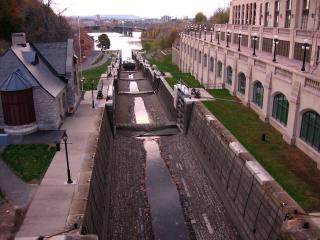
Many people see biofuels as a promising replacement for oil in transportation applications. Indeed, being able to replace the oil that contributes to climate change and must often be imported from nasty regimes with carbon-neutral fuels from domestic crops has a great deal of intuitive appeal. For this process to be worthwhile, however, there is a need to consider both life-cycle energy usage and net carbon emissions.
A study conducted in 2004 by Isaias de Carvalho Macedo at the University of Brazil focused on the production of ethanol from Brazilian sugarcane. This is considered by the majority of commentators to be the most energy efficient source of biofuel currently available. This is because most Brazilian sugarcane requires no irrigation and must only be ploughed up and replanted once every five years. The Macedo study found that producing a tonne of sugarcane requires 250,000 kilojoules of energy. This represents the need for tractors, fertilizers, and other elements of modern mechanical farming. The ethanol from one tonne of sugarcane contained 2,000,000 kilojoules of energy. Furthermore, the plants that produce it burn bagasse (the pulp left over when sugarcane has the sugar squeezed out) and can contribute net electricity to the grid. Corn ethanol (the kind being heavily subsidized in the United States) takes about as much energy to grow as is ultimately contained in the fuel.
In terms of net carbon emissions, cane ethanol is also fairly good. Using one tonne of ethanol instead of the amount of gasoline with the same energy content produces 220.5 fewer kilograms of carbon dioxide, when all aspects of production and usage are considered. Burning one litre of gasoline produces about 640 grams of carbon dioxide. Since ethanol has about 25% less energy than gasoline, the relevant comparison is between 1,000 kilograms of ethanol and 750 kilos of gasoline. The gasoline would emit 460 kilos of carbon dioxide, while the ethanol would emit 259.5 kilos.
This is an improvement over the direct use of fossil fuels, but not a massive one. The Macedo study concludes that widespread ethanol use reduces Brazilian emissions by 25.8 million tonnes of carbon dioxide equivalent per year. Their total carbon emissions from fossil fuels are about 92 million tonnes per year – a figure that increases substantially if deforestation is included.
The conclusion to be drawn from all of this is that ethanol – even when produced in the most efficient way – is not a long-term solution. Producing 259.5 kilos of carbon is more sustainable than producing 460, but it isn’t an adequate reduction in a world that has to cut from about 27 gigatonnes of carbon dioxide equivalent to five. Bioethanol may become more viable with the development of cellulosic technology (a subject for another post), but is certainly no panacea at this time.
References:
[Update: 8:54am] The above numbers on carbon dioxide emissions produced by gasoline per kilometre are disputed. If someone has an authoritative source on the matter, please pipe up.







